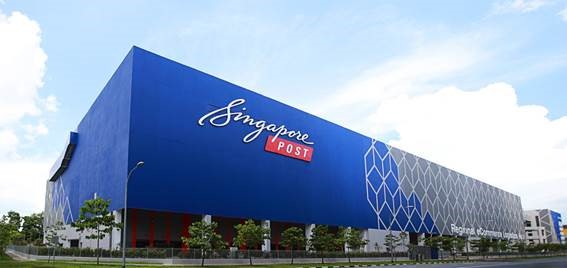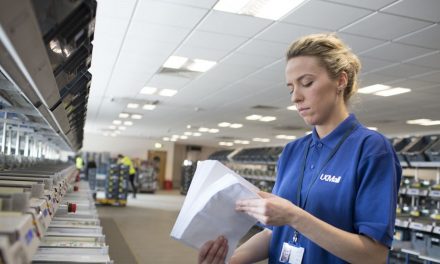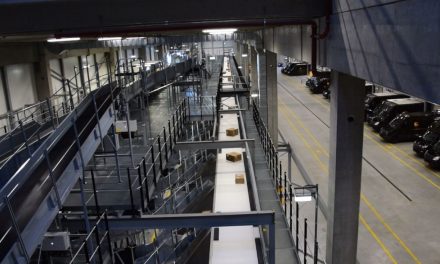
Hybrid Mail: the next generation
Jacob Johnsen, Senior Consultant, Hybrid Mail. World Mail Review November 2008 INTRODUCTION
It has been almost twenty years since hybrid mail emerged as a new element of the postal business. The concept of posts receiving data as well as letters was seen as a way to protect and expand the postal business, and to provide an entry into data management as well as letter delivery.
Some posts have succeeded in hybrid mail, others have failed. Based on the author’s years of experience with more than 25 posts worldwide, this article looks at the various approaches to the hybrid mail process, summarises the do’s and don’ts and the main lessons to be learned, and explains where the hybrid mail business is going.
THE HYBRID MAIL PROCESS
Numerous posts have now placed hybrid mail on their strategic agenda. By receiving data instead of hard copy, posts can more efficiently sort, transport and sequence. Once these processes are completed in digital form, letters can then be printed, enveloped and delivered, or simply onward transmitted electronically.
Hybrid mail enables a closer integration with senders (and especially the senders’ mail generating IT systems), and offers the possibility of new added services such as reduced delivery time, scheduled delivery, sorting, sequencing., and more control over the value chain of a letter. However it also places posts in a new strategic situation in which they must acquire experience in the outsourcing of services.
THE THREE MAIN HYBRID MAIL APPROACHES
Basically there are three ways of offering hybrid mail. The simplest is called Print-and-mail, where the post receives prepared data, prints and envelopes letters, and then delivers them to the postal input centre like any other large mailer. The delivery of data can be in large batches (with thousands or millions of letters) or just a single letter eg via a web interface. In the print-and-mail business the post is competing with existing print shops, where many already have the experience and the sales networks, and have substantial volumes already available through traditional offset printing. In this market the margins are quite small and high volumes are a must. Also the post is competing directly with its customers.
The second hybrid mail offering is formatting-print-and-mail, where posts go further up the value chain, and offer to take the sender’s raw data and to design, create, print, envelope and deliver the letter to each recipient based on this. Here some of the added value is in handling all parts of the sender’s mailing process and may additionally include handling of returned letters, address correction and more. Again the post is competing directly with its customers, since there will be others offering the same, or similar, services.
In postal-hybrid-mail the post integrates its hybrid mail system with its postal delivery system, thereby extending the value chain to include the physical delivery. This will normally include routing capabilities, where letter data is transmitted between multiple production and sorting centres. This level of integration provides opportunities for fine tuning performance both by postal optimisation as well as best use of production equipment. This approach is unique to the post, which may offer additional services in order to maintain reasonable margins. The services may include design and page creation, similar to formatting-print-and-mail.
Some postal operators have had success with all three hybrid mail approaches, but a number have failed when just offering print-and-mail, with or without a formatting service. It seems that posts should focus on exploiting the integration approach rather than just printing, enveloping and delivering letters.
POSTAL INTEGRATION
A genuine integration with the postal delivery network requires that the hybrid mail system produces letters such that they are optimised for transport, sorting and delivery. Usually this requires that letters be produced by deciding where, when and how this should happen.
To define where normally requires multiple production centres and the ability to define where letters are produced based on postal data (or production data if some centres have specific equipment such as colour printers).
Some hybrid mail systems can also determine when letters are produced. Letters or print jobs can hold information about desired (or latest) delivery time. There may be the possibility of time sequencing, where a batch of letters can be distributed evenly over a predefined period (to avoid overloading helpdesk or service phones when customers call back right after the delivery).
Finally, definition of how letters are delivered has many forms: sequencing by postal code or other delivery information, sorting by size or weight, or including various markings, barcodes or other data, either in the envelope windows or on the envelope itself.
TECHNOLOGY SOLUTIONS
The latest technology supports the integrated approach. Multi-site hybrid mail solutions are available and some do offer the above mentioned capabilities. There are also systems that co-mingle letters. In this way letters from numerous senders can all be sorted together, sent to various printing locations, and mingled before production so that the production output is optimised across all letters to be produced. There are even solutions that will integrate letters to the same receiver into one envelope, or include pre-stored one-to-one marketing messages or personalised enclosures into the specific letter.
Another area that is improving is the physical production. Colour printing has been available for a long time, but historically the cost per page has been an inhibitor. New printers based on continuous feed (paper on rolls) have a cost per page for full colour print of only US$0.01 (plus paper, operator costs and overheads). These printers utilise high quality inkjets, and operate at remarkable speeds. Arts quality colour printers can achieve 250 pages per minute in A4 format, whilst inkjet based printers can offer up to 3,200 pages per minute. This is done in a 4/4 configuration and at a paper speed of more than 200 metres per minute!
Envelopers have also improved in speed and quality. Based on the low cost of colour printing, it is now possible to use one of the colour printed pages as the envelope. The first page is folded to create the envelope and the remaining pages are folded and inserted into the envelope. This opens up the possibility of totally personalised envelopes which can be very attractive indeed!
DO’S AND DON’TS
The first posts to introduce hybrid mail were probably the Nordic countries and Italy in Europe, closely followed by other western posts. It became widespread in Asia in the mid 1990’s, in South America and Canada by the turn of the century, and is now being adopted increasingly in Eastern Europe, Africa and a number of smaller countries. During these twenty years, some posts have done very well, some have had problems, and yet others have given up altogether.
The first lesson is that hybrid mail is in essence an outsourcing service. It should be offered as such and the entire marketing and sales activity should focus on this fact. For this reason, successful posts have totally separated the sale of hybrid mail services from other postal sales. They may address the same customers (or not), but the approach is very different. For many customers the use of hybrid mail for the delivery of their letters is a highly strategic choice and involves many aspects of their business.
Secondly, it is important to make use of the benefits of the integrated postal hybrid mail model. Posts who have just set up a printing office have created a business similar to many existing private print shops. Whether or not they are successful depends on the market situation, but they will never grow to full potential. This is only achieved when the hybrid mail service integrates fully with the postal logistics system. This requires the ability to sort and move mail dynamically, and to apply this sorting and transportation process to all the letters received.
Finally, the services offered must add value over and above any possible competitor offerings. This can be achieved by having true postal hybrid mail systems. In Sweden, for example, hybrid mail letters for the capital Stockholm will be delivered the same day, if data is ready for print by 1 a.m. This is fast delivery! In Germany Deutsche Post can offer an extremely fast and flexible service based on eight printing centres throughout the country. Having the printing centre inside the sorting centre offers speed advantages, and also optimises the use of the logistics system, since the hybrid mail system can be requested to deliver specific types of letters at specific times.
THE FUTURE OF HYBRID MAIL
Colour printing will be an important part of hybrid mail in the future, together with improved document flexibility and print quality, and more and more personalised inserts and envelopes. It will also be the case that hybrid mail systems will be able to create not only letters but also airline or train tickets, reservations, vouchers, credit cards and many other things.
Apart from these technology advances, an increasing number of customers will agree to receive their letters electronically. Most hybrid mail solutions offer a multitude of electronic delivery options such as webmail, secure e-mail, digital signatures, combined with alerts by SMS and, of course, fall back options using the physical letter. However many posts are reluctant to go this way, as it may jeopardise their traditional letter business.
The posts will have to decide if they want to offer these types of services, and thereby cannibalise on their physical volumes, or wait until other messaging service operators ( or the senders themselves) do it instead.
Should you have questions or comments, please feel free to contact the author by e-mail: [email protected]













